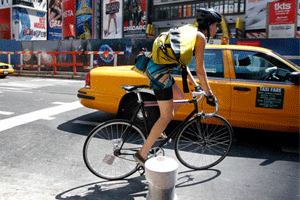 While so much attention is being paid to same-day and next-day delivery, members of a merchant panel at the recent Operations Summit in Louisville, KY said while they do all they can to decrease time-to-customer, instant (fulfillment) gratification isn’t a high priority for them at this point.
While so much attention is being paid to same-day and next-day delivery, members of a merchant panel at the recent Operations Summit in Louisville, KY said while they do all they can to decrease time-to-customer, instant (fulfillment) gratification isn’t a high priority for them at this point.
Instead, free or reduced shipping, along with hitting the bull’s-eye on their delivery promise, was of much greater importance than fast delivery, panelists said. Better aligning operations with carrier schedules, including adjusting shifts and using multiple pickup times, were they are working to shrink delivery times.
In a session titled “I Want It Now – Or Do I? Gauging Demand for Same-Day/Next Day and Balancing Cost and Service Level,” merchants said market drivers like Amazon’s relentless push to immediacy and more retailers offering same-day services have definitely turned up the heat.
“Our business is a bit different as the majority of our volume is international” said Troy Van Wormer, vice president of operations for nutriceutical distributor iHerb. “But our U.S. customer is very focused on fast, as the bar has been set high by our friends with the drones.”
Van Wormer added that for foreign customers, who have very different delivery expectations from a domestic shipper, iHerb uses free shipping as a mechanism to drive volume and new customer acquisition overseas.
“We run shipping specials for our international customers, offering free shipping for orders over a certain dollar threshold,” he said, adding volumes spike up significantly as a result, justifying the expense. “Most (retailers) do that here, at $50, $60, $75, $100. Our domestic free shipping is at the $20 level, so we’re giving shipping away every day.”
Van Wormer said iHerb has worked to shrink delivery times through fulfillment automation. “It lets us get orders quickly out the door and to the carriers and freight forwarders, to start the clock ticking faster,” he said.
Mark Desroshiers, director of distribution for educational and craft supplier S&S Worldwide, said his company began offering free shipping in 2010 and found it was preferred over speed in customer surveys.
“It’s also important for them to understand that if they order something on a Monday they’re going to get it on Wednesday, not Thursday or Friday or Monday,” Desroshiers said. “We do offer some same-day delivery locally but it’s all about understanding the customer, keeping up with what they need and what they don’t.”
He said free shipping “started out as a wow service, but now has become a satisifier. We’re talking about going beyond free shipping for $59 orders, and offering free freight from dollar zero, while offering some additional services for faster delivery.”
Moderator Deanna Kaufman, manager of solutions for FedEx Services, referenced a 2014 study from BI Intelligence that projected same-day merchandise sales would increase more than six-fold by 2018, from $620 million this year to $4.03 billion.
“There are lots of major players integrating new disruptive concepts, and same-day startups like Uber, Lyft, Sidecar, Instacart and Shutl, especially in urban areas,” she said. “Then you have things like lockers and click and collect, as retailers look for ways to provide maximum convenience. They want flexibility in when and where they get it, and how they pay for it.”
Strategic placement of distribution nodes can change the “want it now” dynamic, as well as omnichannel practices like ship from store, by getting retailers closer to the customer.
According to U.S. census data Kaufman shared, the average shipping distance using one DC is 820 miles, which shrinks to 183 miles with 10 DCs, although that isn’t a feasible option for most retailers. And an RBC Capital Markets chart showed how Amazon had shrunk the distance to the top 10 markets in the U.S. from 229 mile in 2009 to 57 miles in 2013 – putting pressure on retailers to get closer as well.
Doug Smith, vice president of direct-to-consumer operations for Shepler’s Western Store, said the company’s customer attitude surveys have shown acceptance rates of 30% to 40% when offering free shipping. Charge $5, Smith said, and those rates start plummeting; at the $10 mark, they hit 1% to 2%.
He talked about his former job as senior manager of customer operations for Sony Electronics, where same day was always the standard for delivering repair parts on equipment like theater projectors that required guaranteed uptime, necessitating forward stocking and shipping locations all over the country.
“Same-day now to me is almost the same thing,” he said. “You’ve got to have a product everyone wants, a limited SKU count, and have customers willing to pay a bit more for it. You have to raise the price or charge for shipping. That’s the challenge I see, and it’s an insurmountable task. Pizza shops do it – they’ve got one SKU and kitting. If you can spread out the inventory risk and have limited SKUs, you’re the winner on same day. Someone like me is the absolute loser on it.”
